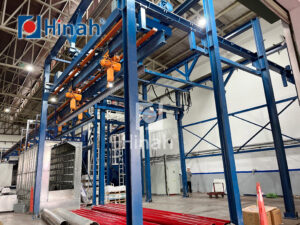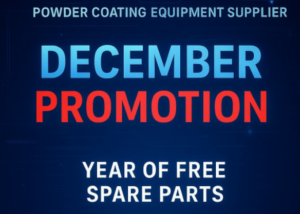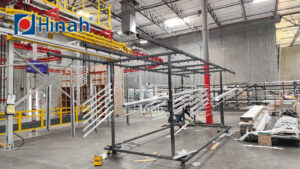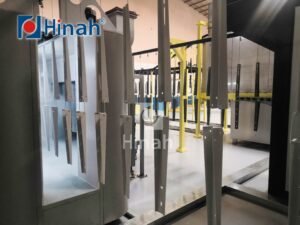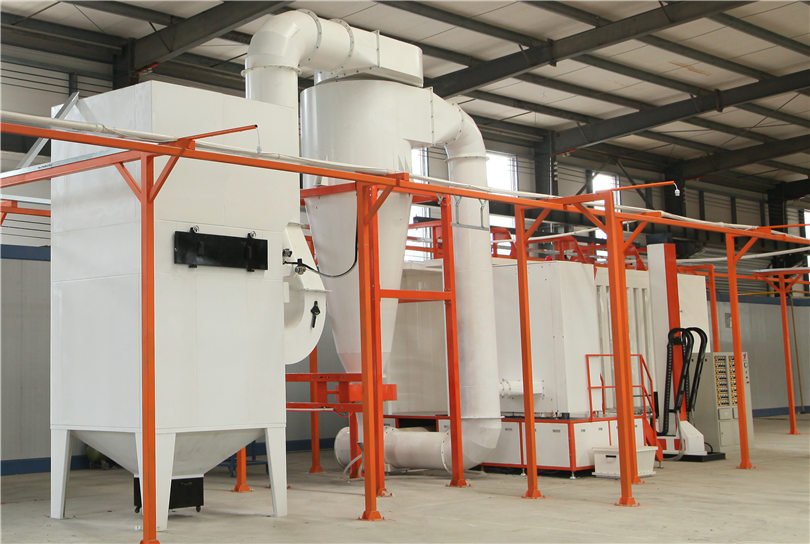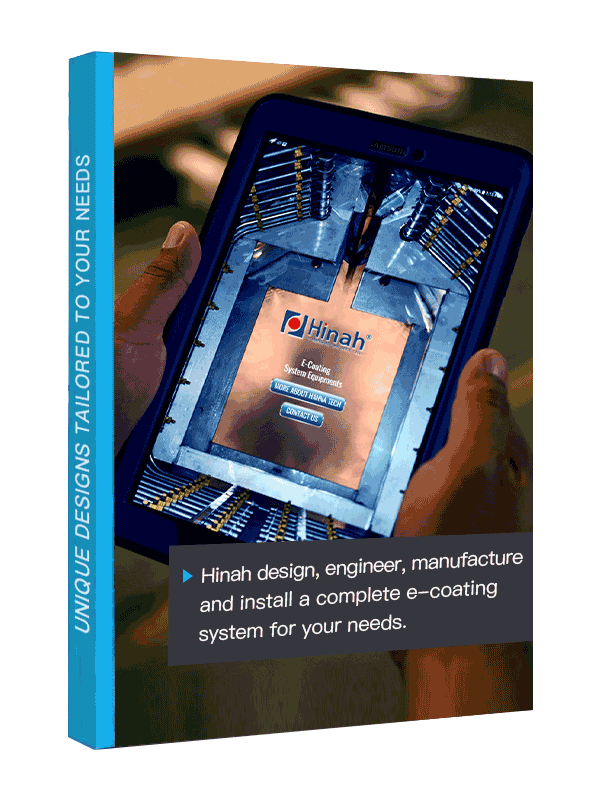If you’ve worked with a powder coating line long enough, you’ve probably heard that faint, rhythmic noise coming from the conveyor drive chain — the kind that doesn’t sound quite right. At first, it’s easy to ignore. But over time, that subtle vibration turns into uneven movement, product misalignment, and even costly downtime.
Chain wear might seem like a small mechanical issue, but in reality, it’s one of the silent killers of production efficiency. The drive chain is the heartbeat of the entire coating line — every booth, oven, and workstation depends on its steady rhythm. When it starts to wear out prematurely, everything else in the system begins to suffer.
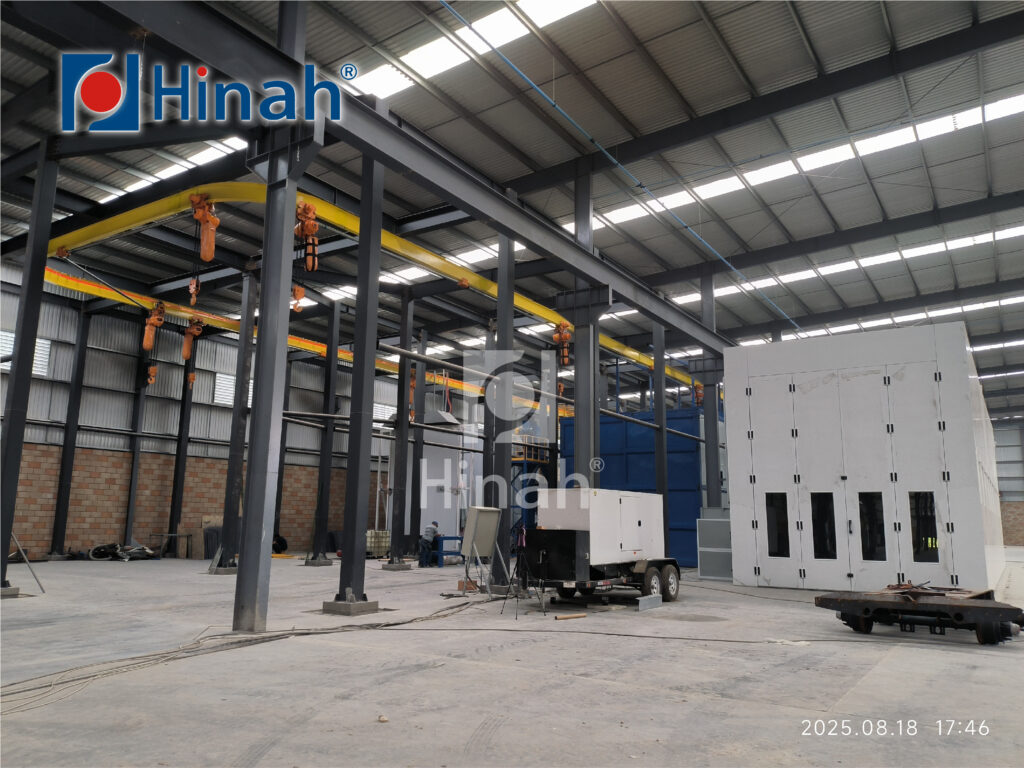
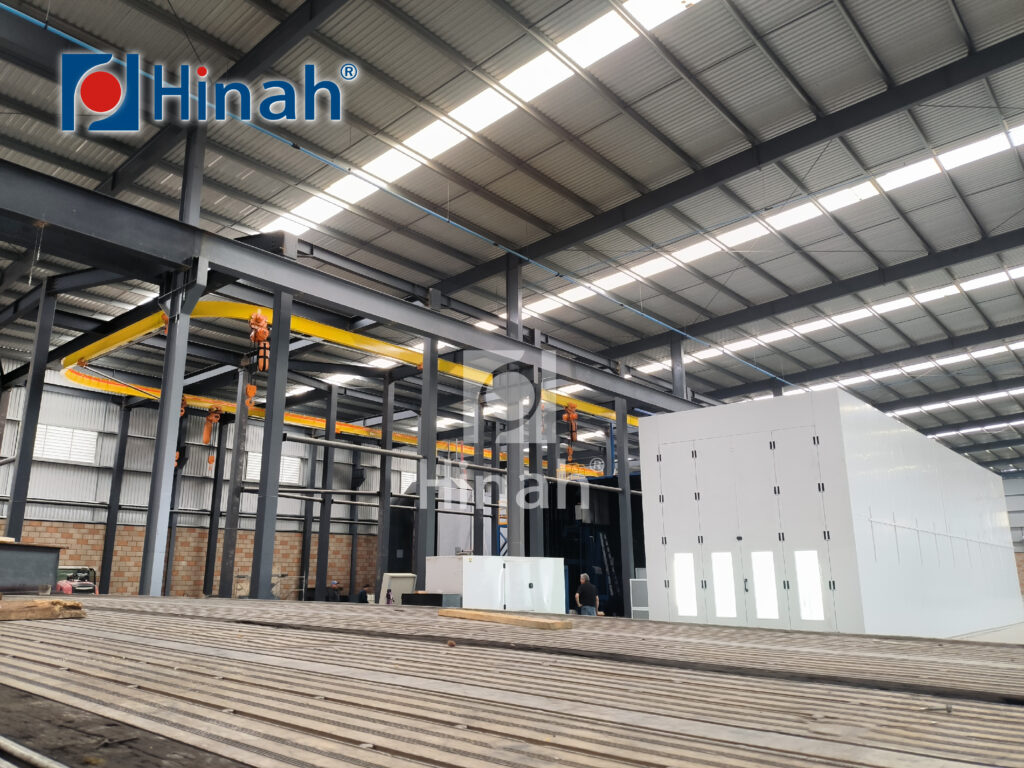
Common Causes of Chain Wear in a Powder Coating Line
When a powder coating line begins to show irregular motion or vibration, the drive chain is often the first place to look. Understanding why chain wear occurs isn’t just about replacing parts — it’s about preventing deeper structural and operational problems from developing over time. Let’s break down the most common causes and what they reveal about the system as a whole.
Unreasonable Conveyor Design
One of the most frequent reasons for premature chain wear is poor conveyor design. In many older or hastily built powder coating lines, the layout isn’t optimized for smooth motion. You might see sharp turns, uneven track alignment, or sections where the chain runs at an unnatural angle. Each of these issues creates extra friction, adding unnecessary mechanical stress on the drive system.
Over time, this friction acts like sandpaper — gradually grinding away at the metal links. The result? You get a chain that stretches, rattles, and eventually fails.
In well-designed systems, every roller, guide, and sprocket should work in harmony. That means no awkward transitions or tight radiuses where the chain is forced to bend beyond its comfort zone. During the design or installation stage, engineers should always simulate the conveyor’s path under load to identify potential wear points early on. It’s not just about making the line run — it’s about making it run smoothly.
Insufficient Load Capacity in Design
Another silent cause of chain wear is underestimating the load capacity of the drive system. This happens more often than you might think. When designing a powder coating line, it’s easy to calculate based on ideal conditions — empty racks, light parts, perfect lubrication. But real-world production is rarely so gentle.
As parts get heavier or coating builds up, the actual working load can quickly exceed the chain’s rated capacity. When that happens, the chain is constantly being pulled, twisted, and stressed beyond its design limits. The extra tension accelerates wear, causing elongation and fatigue cracks along the links.
A properly engineered system should always have a safety margin between the theoretical load and the real operational demand. It’s not just a question of “Can this chain handle it?” but rather “Can it handle it continuously for years without degrading?” Choosing a slightly higher-grade chain or re-evaluating the drive power can dramatically extend the lifespan of the entire line.
Poor Maintenance and Lubrication
Even the best-designed coating line can’t survive long without proper maintenance. Lubrication, in particular, is the lifeline of any chain-driven system. Without it, metal rubs directly against metal — generating heat, friction, and corrosion that eat away at the links.
Many maintenance teams underestimate how quickly the lubricant breaks down under high temperatures or powder overspray. The coating environment itself — with its fine powder particles and curing ovens — makes the chain especially vulnerable to contamination and drying. Once the lubricant fails, wear accelerates exponentially.
Regular inspections and lubrication schedules should be non-negotiable. The use of high-temperature-resistant lubricants or automatic oiling systems can make a significant difference. Additionally, cleaning the chain to remove built-up powder or overspray helps keep the system running freely. Remember, every squeak or vibration is your coating line trying to tell you something — and ignoring it can cost far more than a few drops of oil.
In short, chain wear is rarely caused by a single mistake. It’s usually the result of small design flaws, overlooked calculations, and forgotten maintenance routines that pile up over time. But with attention to detail and consistent care, even a heavily used powder coating line can stay reliable for years without major repairs.
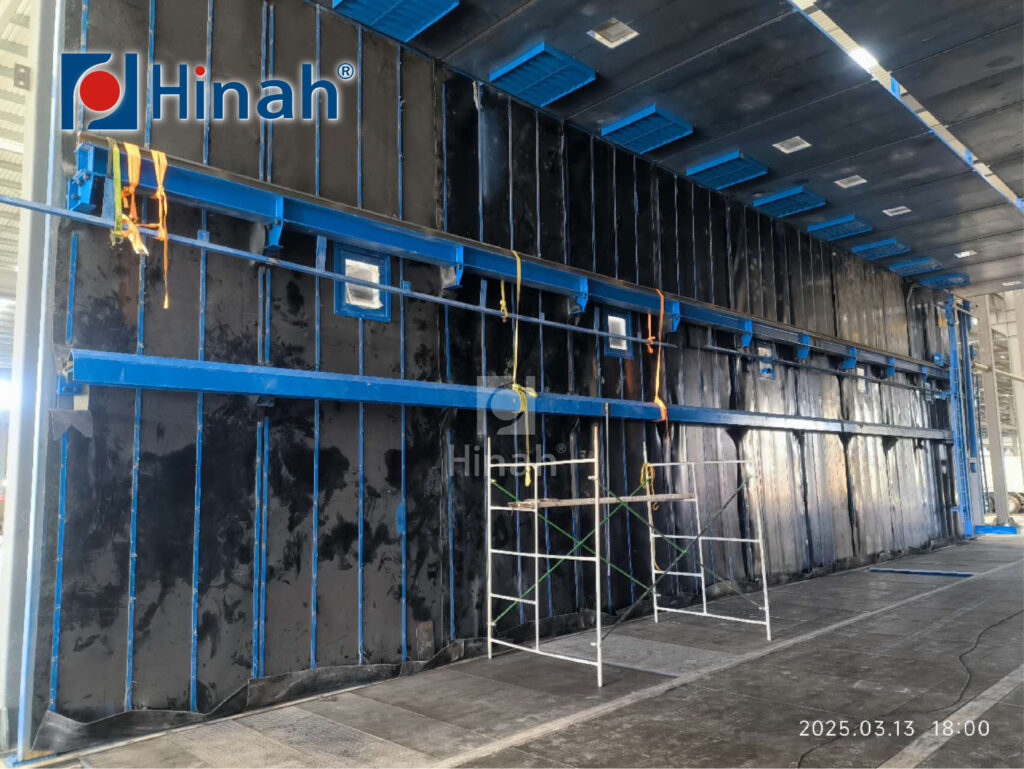
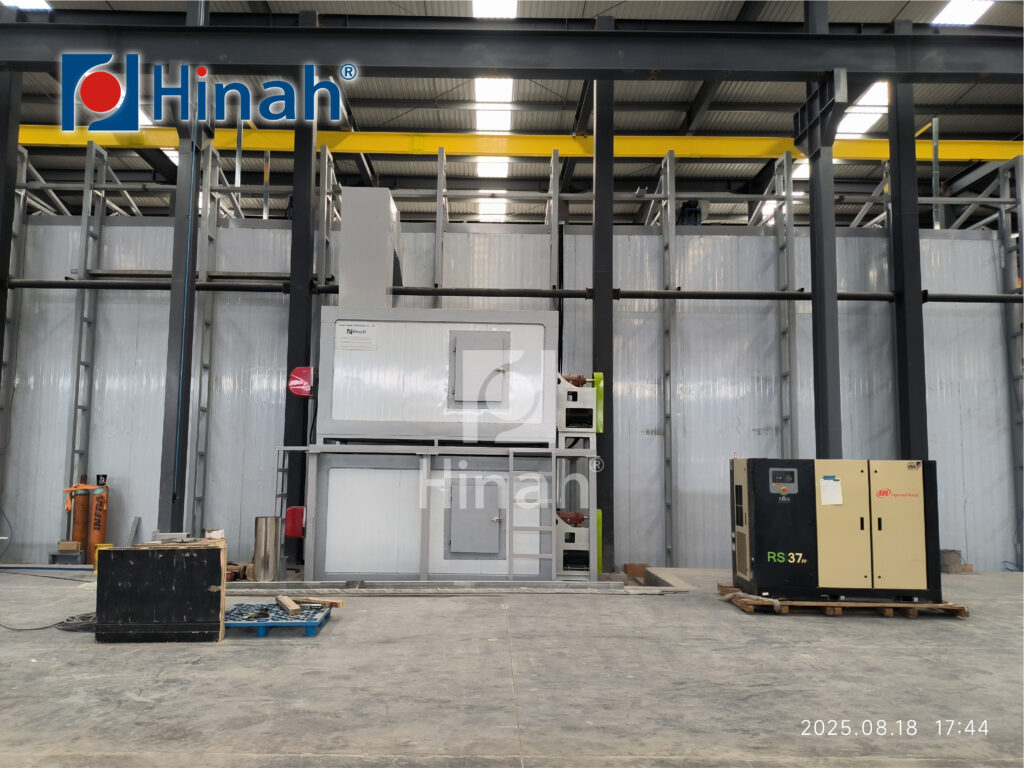
Preventive Measures and Best Practices
Preventing chain wear in a powder coating line isn’t complicated — it just requires consistency. Small steps taken regularly can save you from big repair costs later.
First, inspect the conveyor chain often. Don’t wait for strange noises or jerky movement; by then, wear has already advanced. Look for uneven tension, elongation, or metal dust around the sprockets. Catching these signs early can prevent costly downtime.
Second, keep the chain clean and well-lubricated. Powder and heat can quickly dry out cheap oil, so use a high-temperature lubricant and reapply it regularly. A clean, smooth-running chain reduces friction and keeps the line stable.
Finally, make sure your conveyor stays properly aligned and the chain load matches its design capacity. Even a small misalignment or overload can cause one-sided wear and shorten the system’s life. Regular adjustments and simple operator checks go a long way toward keeping the powder coating line reliable.


